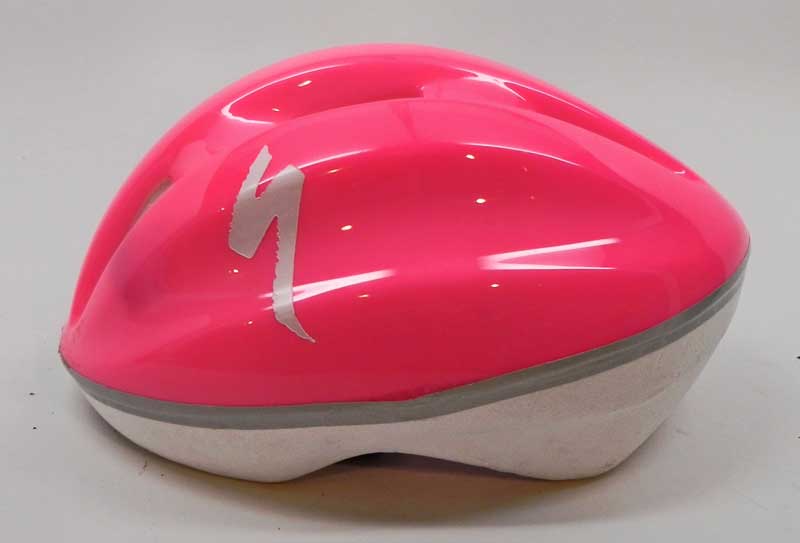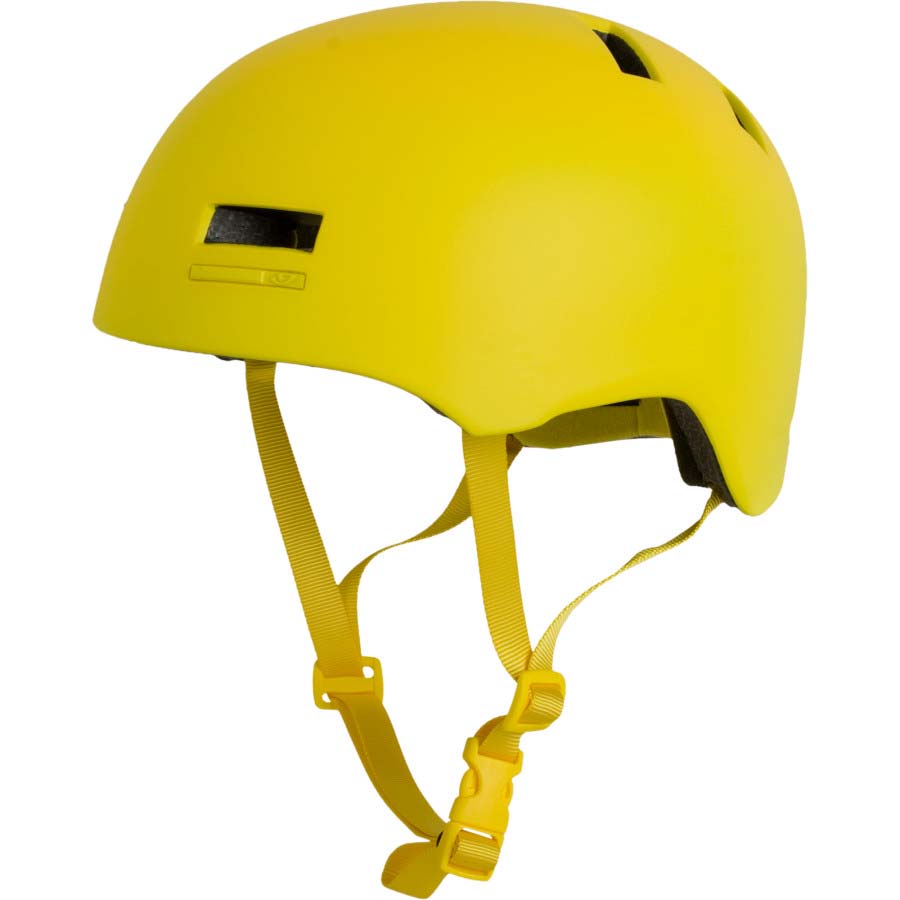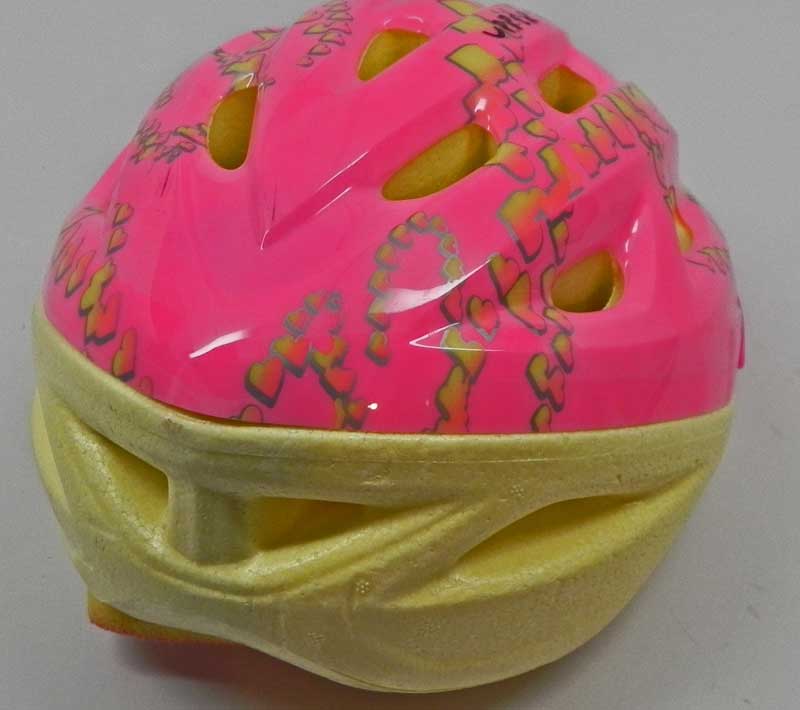Don't put your bicycle helmet in a dishwasher!
Summary: Dishwashers damage bike helmets. Clean your helmet as recommended by the manufacturer, or just use mild soap and water.
We have a page up on safe ways to clean your helmet.
But parents who are in a hurry sometimes dump the kids' helmets in a dishwasher. We don't recommend that.
We washed a selection of helmets in two dishwashers. We used the top rack in the one with an exposed heating coil.
The results were not good. Some helmets were ruined:
On first wash in a Bosch without exposed heating coil, the helmets were not damaged much. On subsequent washes, labels disappeared and fitting foam began to disintegrate. In a second dishwasher with an exposed heating coil, taped on shells came loose and even separated. Glued-on shells warped around the edges. Only the inmolded helmets had no visible damage.
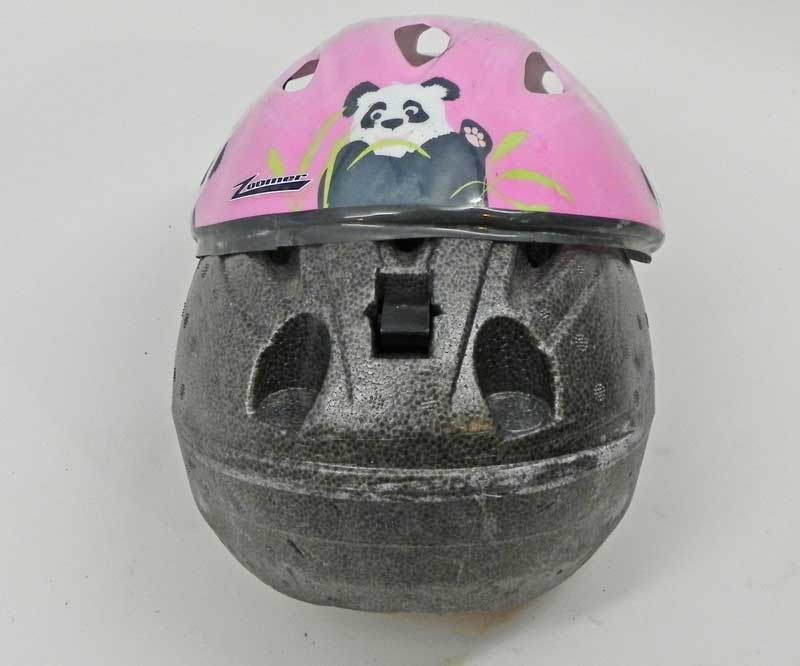
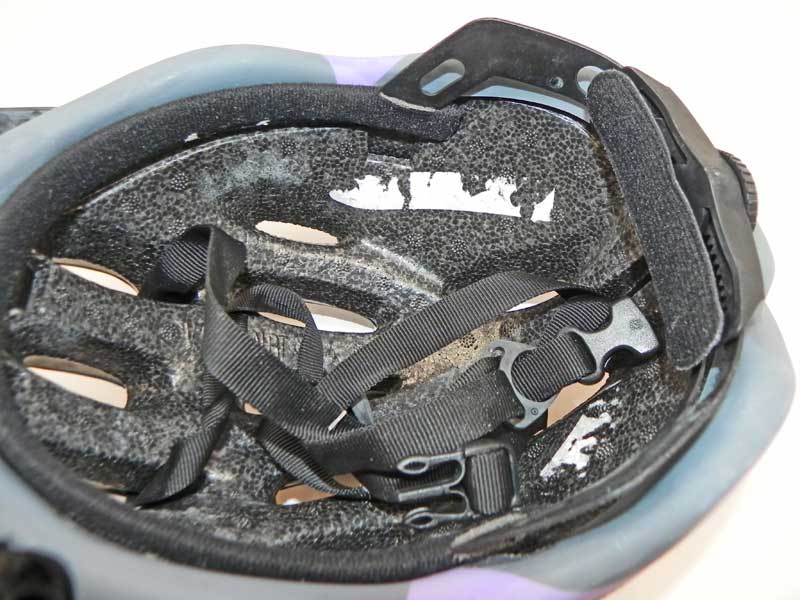
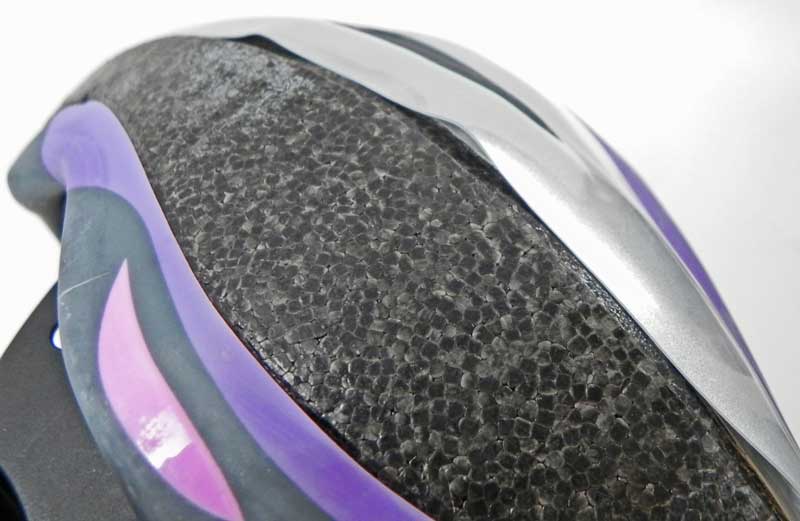
- Exposed heating coils can catch helmets on fire if the helmet or straps touch them.
- As labels washed off, they left sticky adhesive patches capable of pulling out hair.
- Surfaces degraded, and glossy helmets became faded and matte. You would probably not want to wear one.
- Some liner foam got fuzzy on the surface.
- Some buckles, visors and stabilizers oxidized and got a white film on their surface.
- When they dried, deteriorating foam pads spread tiny sticky black specks everywhere.
Some helmets were still in good shape on the outside at the end of the washings:
Labels are important
The stickers inside a helmet are important. Washing labels out of a helmet means you or the next user will have not know what standard the manufacturer has certified that the helmet meets. That means you can't verify the helmet's age or if a more recent standard ensures better performance. It also prevents identifying a recalled helmet to return.
Impact Performance
After the washing treatments were finished BHSI shipped some of the helmets with apparent degradation to the accredited independent testing laboratory at Southern Impact Research Center to determine if the washings affected the helmets' performance. The lab tested the straps, then impact performance with impacts on the flat anvil at 6.2 m/s, corresponding to the flat anvil drop of the CPSC bicycle helmet standard.
The lab test results showed that even the most apparently affected helmets still met the basic flat anvil impact requirement of the CPSC impact standard. That included models with taped-on and glued-on shells that had warped or even detached. The Giro model had identical performance to earlier testing of unwashed samples.
Other machines
Dishwashers ruin helmets, with only water spray and heat. A washing machine tumbles or agitates the laundry, and is so likely to damage a helmet's impact performance that we will not even test with one. Microwaves will melt the foam and plastic shell. Hand cleaning with mild soap takes only a few minutes and will not damage your helmet.
Conclusion
Never put your helmet in a washing machine, dryer, microwave or dishwasher to clean it!
Testing Detail
We have a detailed writeup with more photos.
Back to the top
Back to the Home Page
